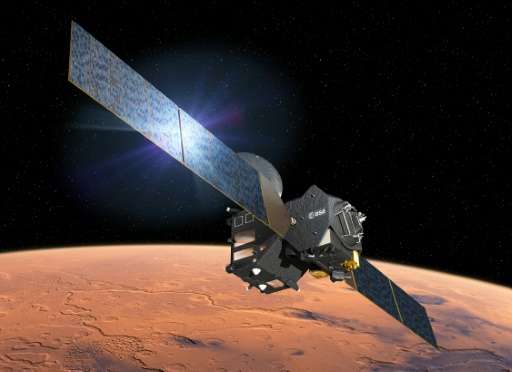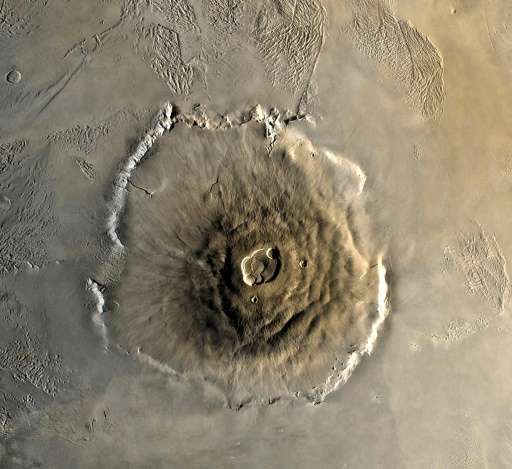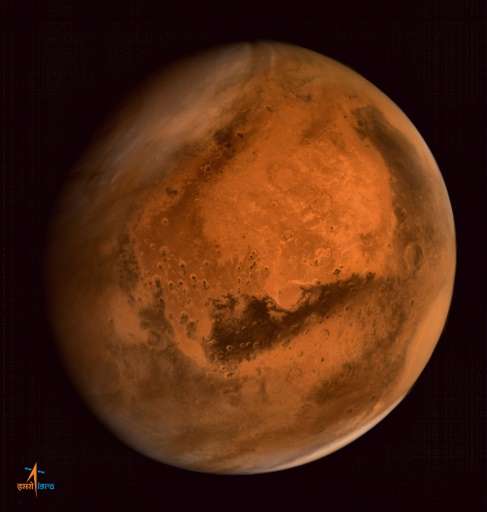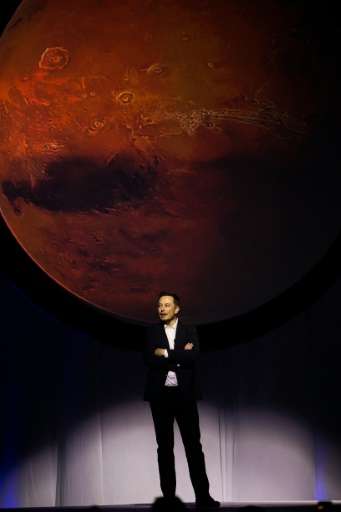Mars missions: Past, Present and Future

Long before the space age, Earthlings were already in hot pursuit of life on Mars, using primitive telescopes and even psychic mediums to seek evidence of sentient beings.
Long thought to be green-skinned creatures, and long referred to as "Martials", they were believed in the late 1800s to have built networks of irrigation canals—an inference from telescopic evidence of "straight lines" on the Red Planet's surface.
There were no lines. But early scientific blunders, aided by fictional accounts and tall tales of psychic encounters with creatures which spoke a language similar to French, helped create a long-lasting myth.
Modern science has dispelled such nonsense, and today we know the hostile Martian surface is too radiation-blasted, cold and dry to host life as we know it on Earth.
The search is still on, however, for single-celled organisms which may be lurking underground, "burping" methane—or for remains of life that may have existed some 3.5 billion years ago when Mars was a warmer place with liquid water.
An overview of successful Mars space missions:
Past:
1965: Following several failed attempts by the former Soviet Union, NASA's Mariner 4 completes the first successful flyby of Mars and takes photos, kicking off space exploration of the Red Planet.

1971: The former Soviet Union's Mars 2 and Mars 3 craft become the first to enter orbit—completing several loops.
A lander deployed by Mars 3 became the first craft in 1971 to make a soft Mars landing—though contact with the craft was lost after just seconds. The Mars 2 lander crashed into Mars, becoming the first human debris left on the Red Planet.
1971: NASA's Mariner 9 becomes the first US craft in Mars orbit.
1975-80: NASA's Viking 1 becomes the first succesful orbiter-lander combination fitted with experiments to search for Martian microbes.
1996-7: NASA's Mars Pathfinder delivers the first rover, dubbed Sojourner, to the surface. It was followed by rovers Spirit and Opportunity in 2003, and Curiosity in 2011.
Present:

NASA: The American agency's Opportunity and Curiosity rovers still roam the Red Planet's surface today. It also has three orbiters: the Mars Odyssey, Mars Reconnaissance Orbiter and MAVEN.
EUROPEAN SPACE AGENCY: Europe's Mars Express has orbited the Red Planet since 2003. Its first attempt to place a European rover on the surface failed that same year.
INDIA: India placed its first working orbiter, named Mangalyaan, around Mars in 2014.
Future:
The Trace Gas Orbiter, part of a joint European-Russian mission called ExoMars, should enter a Mars loop on Wednesday, and start sniffing the planet's atmosphere in early 2018 for signs of life.
Its Schiaparelli test lander is also due to touch down Wednesday after a hairy six-minute atmosphere crossing designed to pave the way for a rover due for launch in 2020.

China hopes to send an orbiter and rover to Mars around 2020.
More ambitiously: SpaceX chief Elon Musk plans to send an unmanned spaceship to Mars by 2018 as part of his quest to colonise the Red Planet with humans.
NASA wants to send people to Mars by the 2030s.
Dutch company Mars One, is weighing volunteers for a project to colonise the fourth rock from the sun—for the moment, return is not part of the plan.
Sources: NASA, European Space Agency
© 2016 AFP





















